Factors & Multiples Worksheets With Answers
Count in 2s Maze
Grades: 1st Grade, 2nd Grade
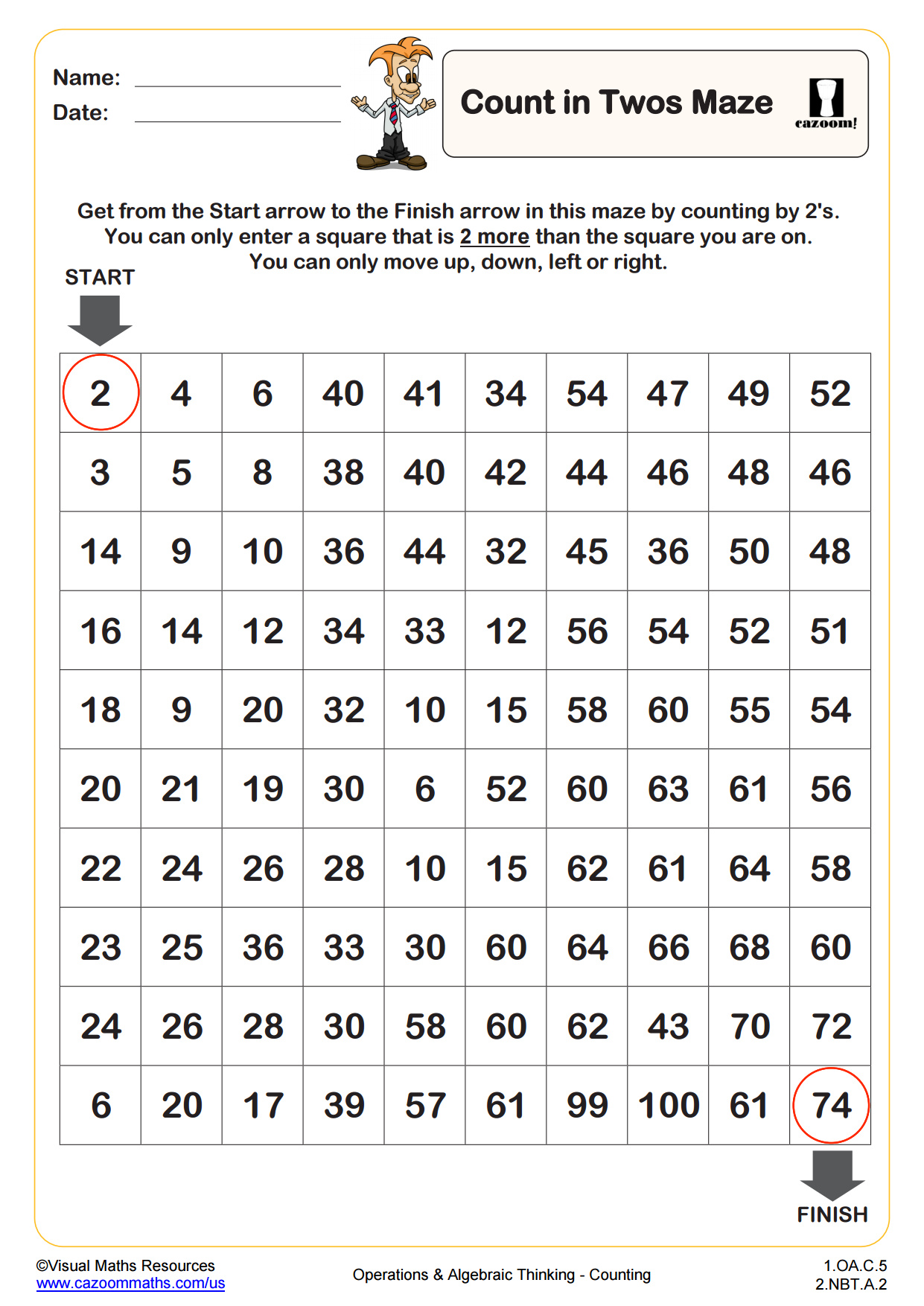
Count in 3s Maze
Grades: 1st Grade, 2nd Grade
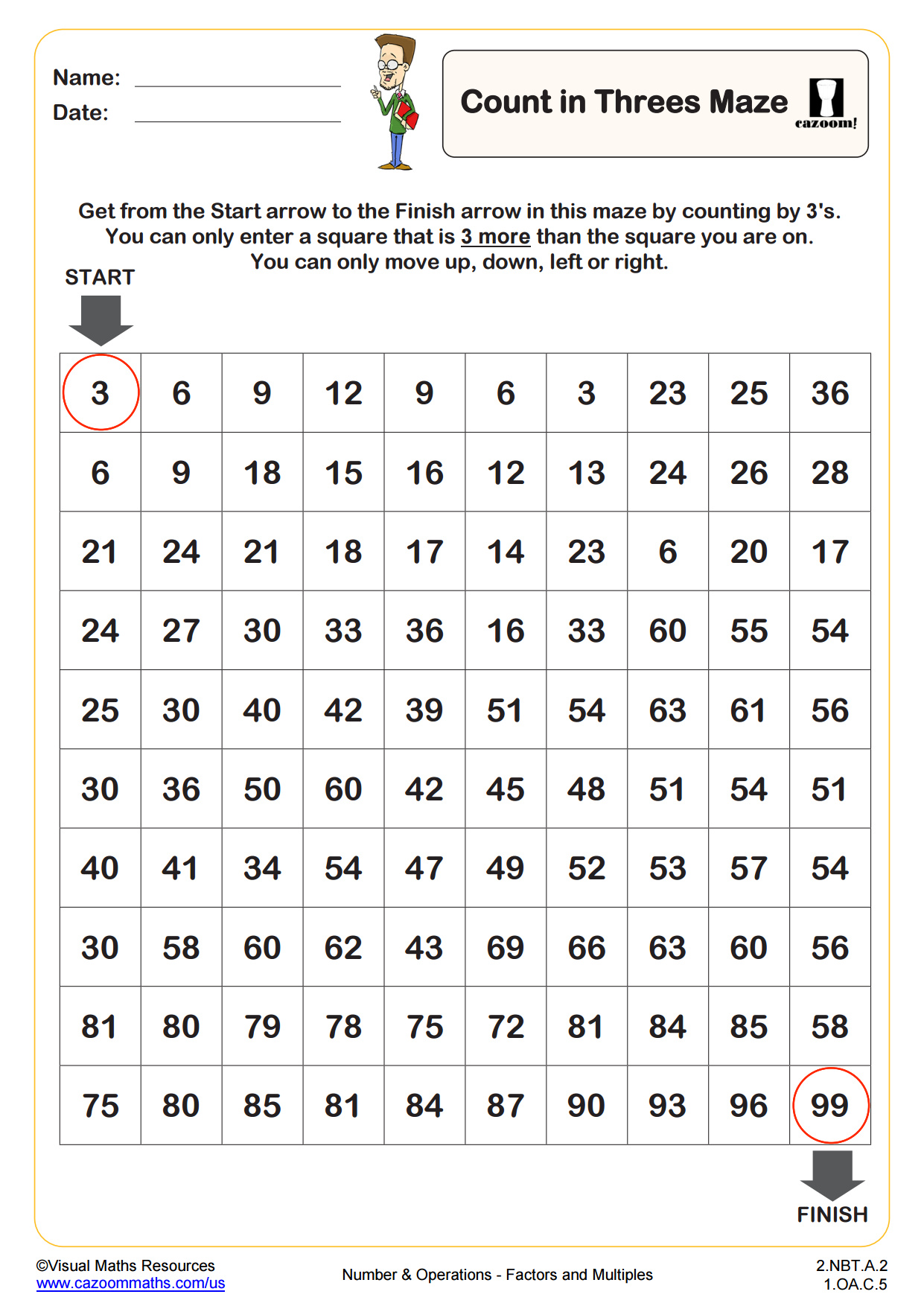
Count in 5s Maze
Grades: 1st Grade, 2nd Grade
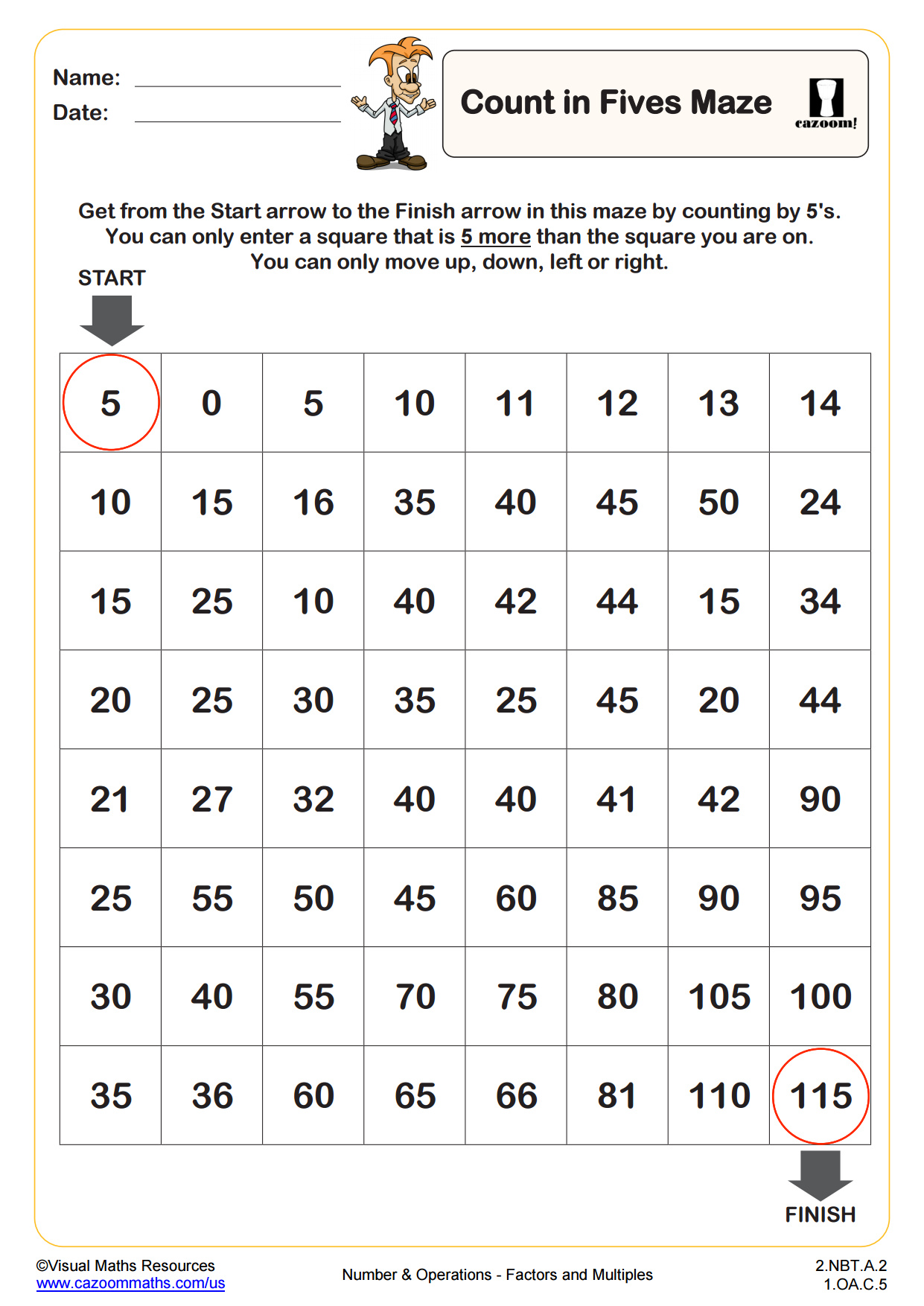
Skip Counting (count by 2s)
Grades: 1st Grade, 2nd Grade
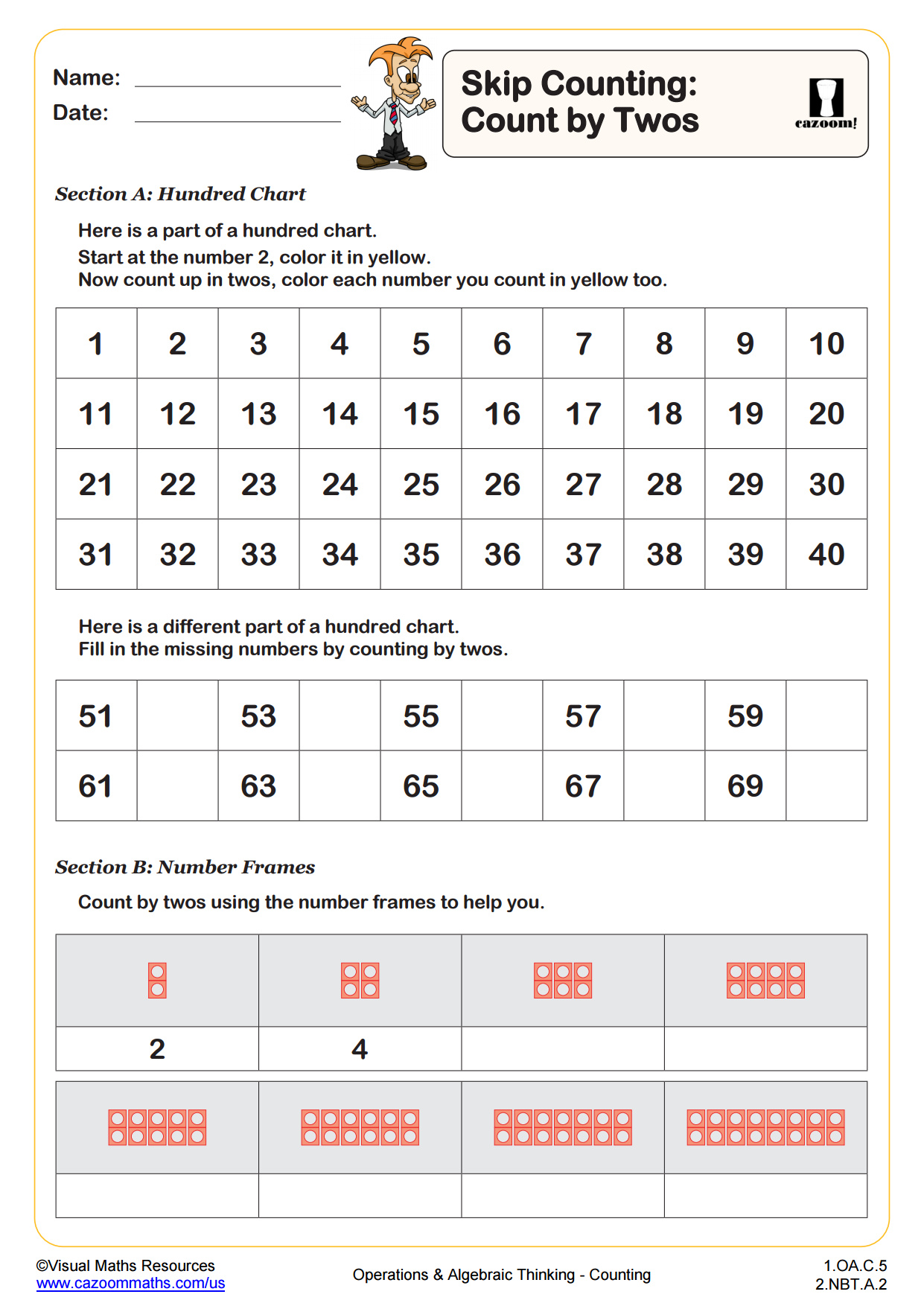
Skip Counting (count in 10s)
Grades: 1st Grade, 2nd Grade
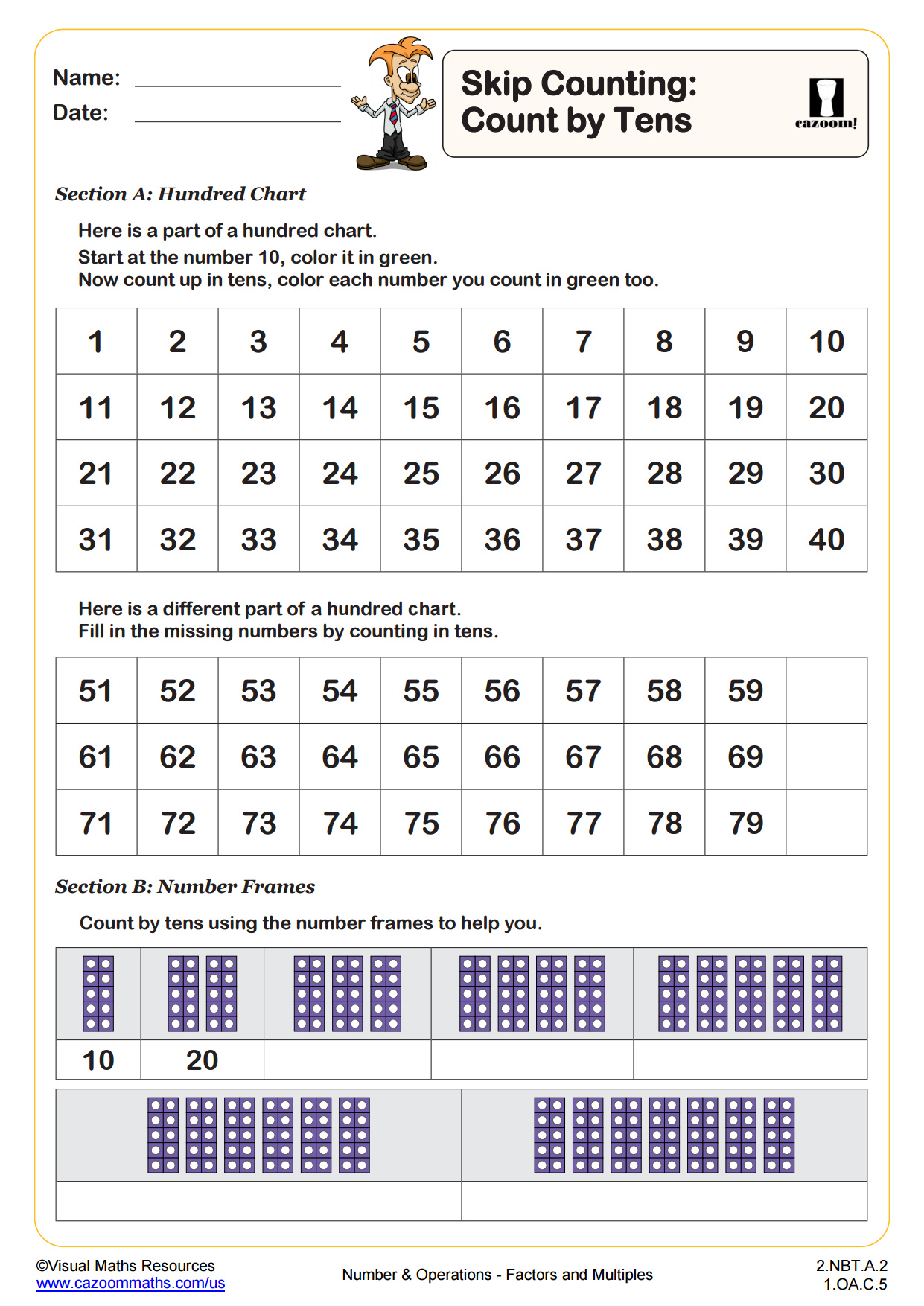
Skip Counting (count in 5s)
Grades: 1st Grade, 2nd Grade
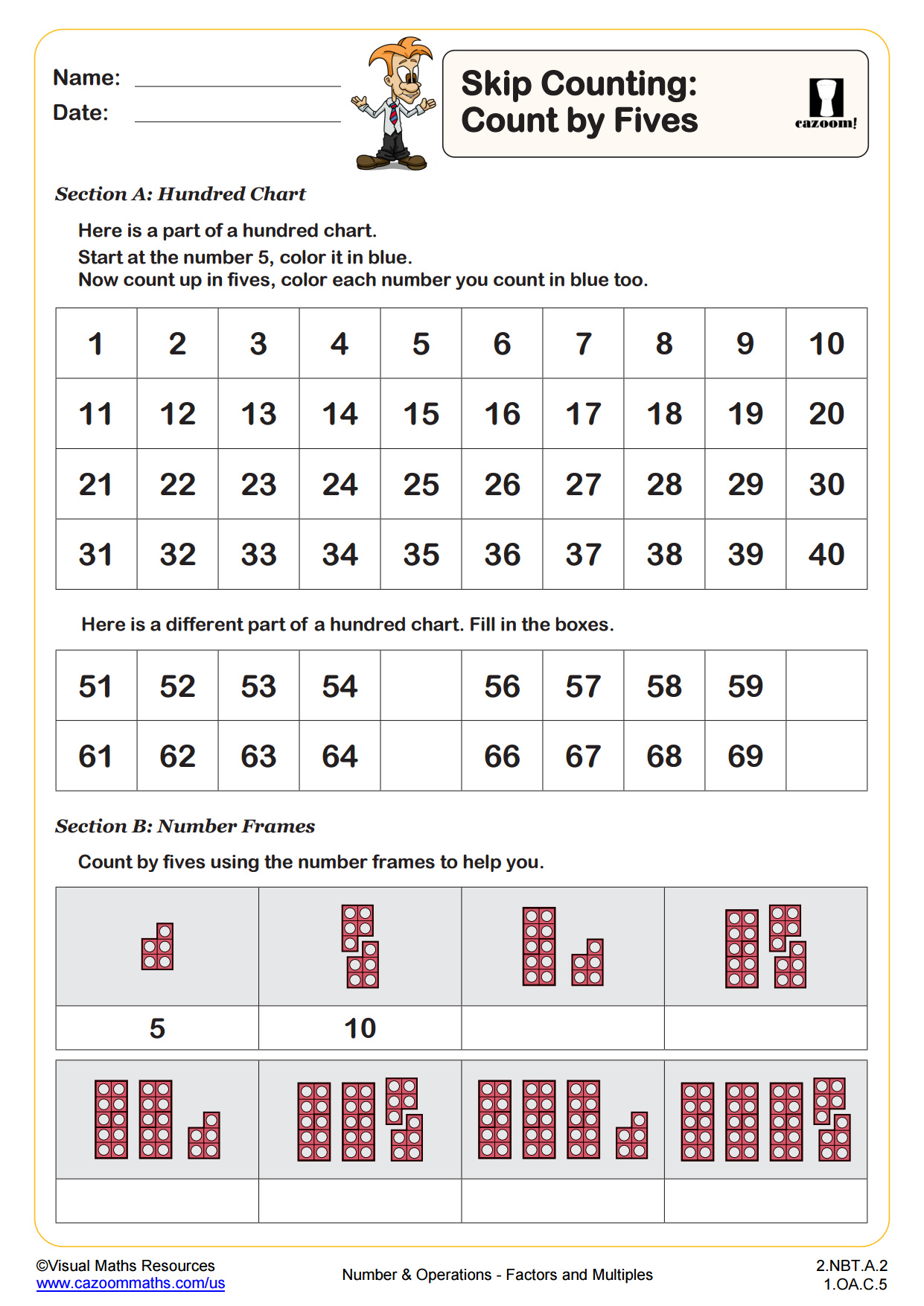
Factors (A)
Grades: 4th Grade, 6th Grade
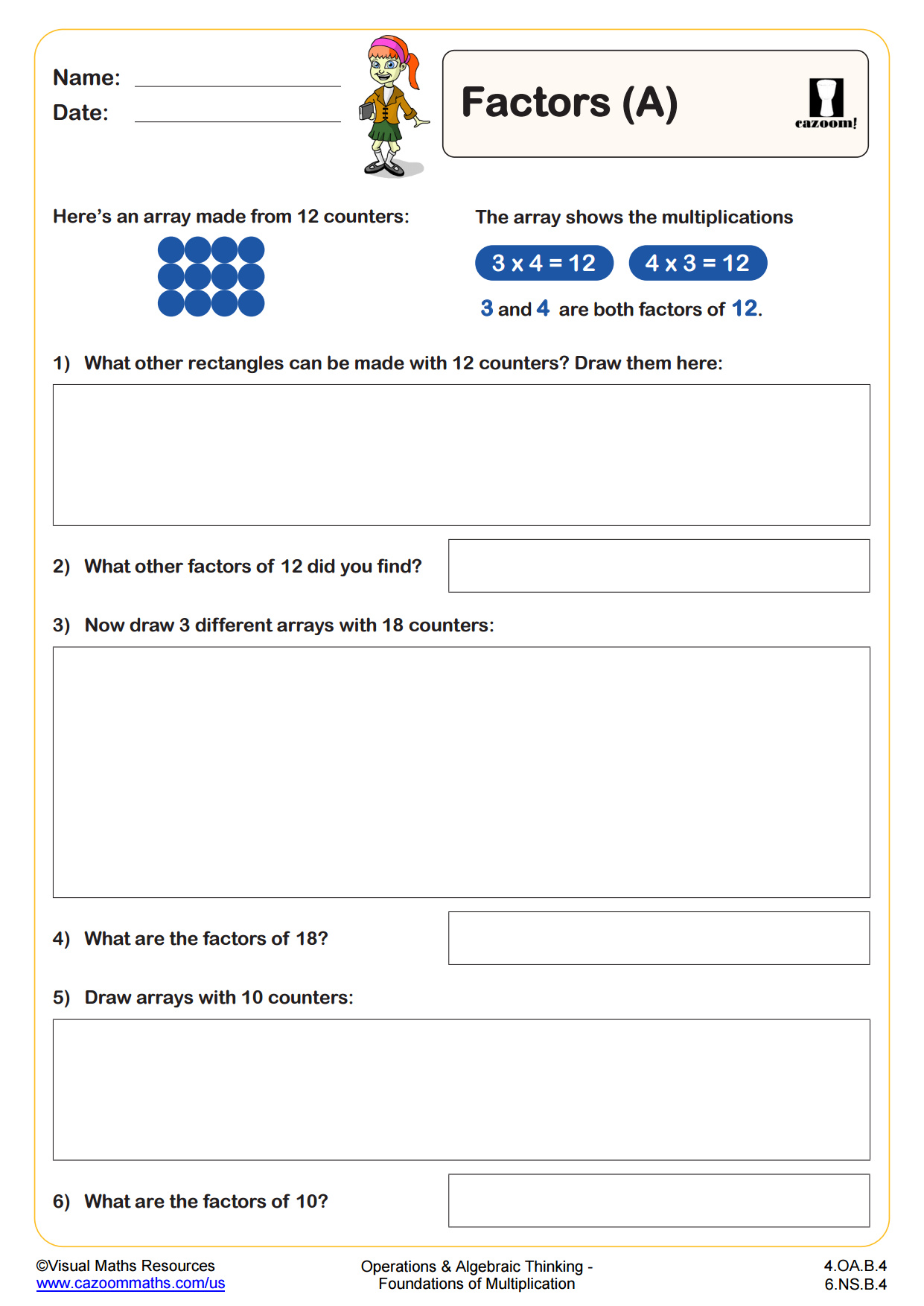
Factors (B)
Grades: 4th Grade, 6th Grade
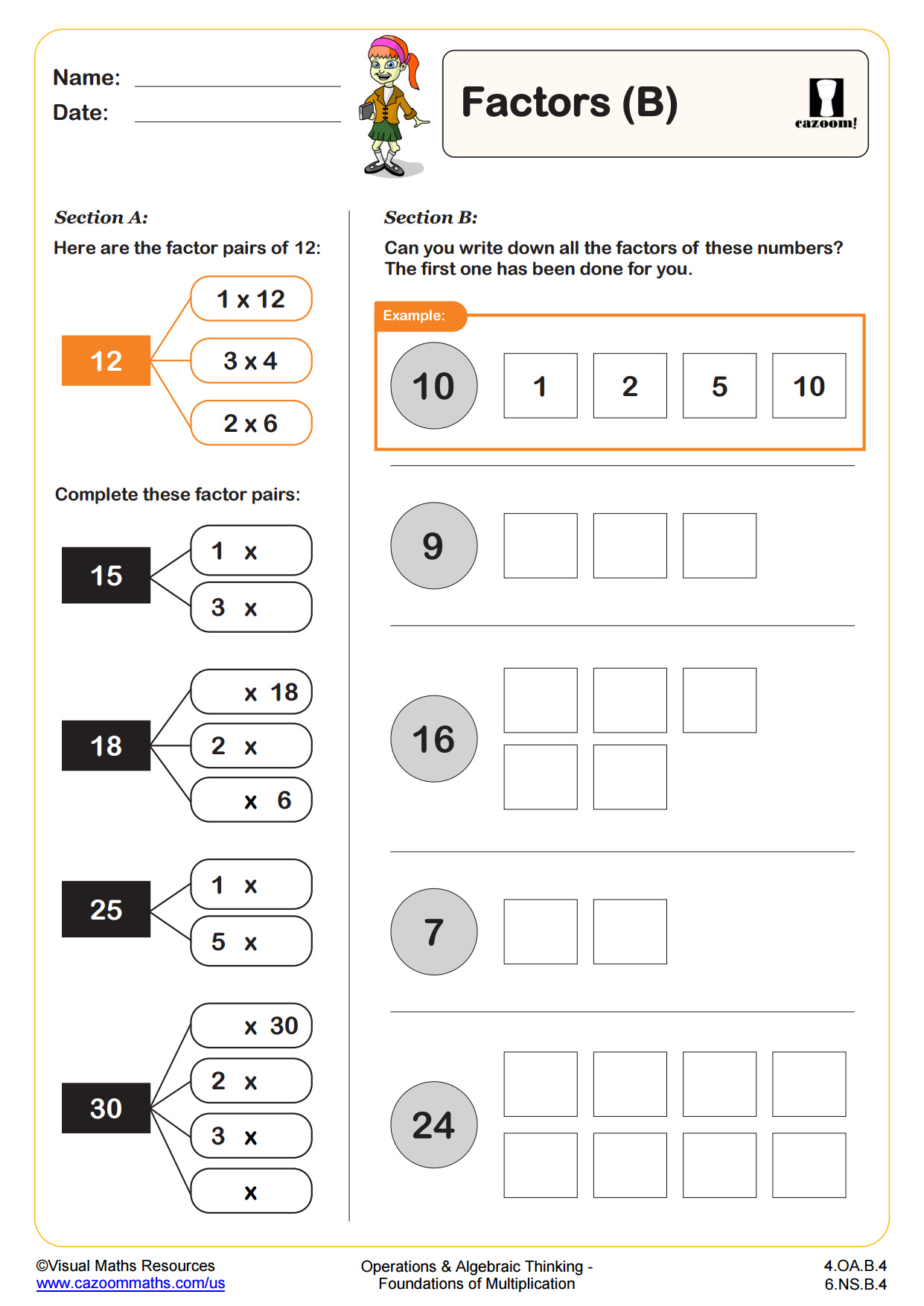
Factors and Multiples
Grades: 4th Grade, 6th Grade
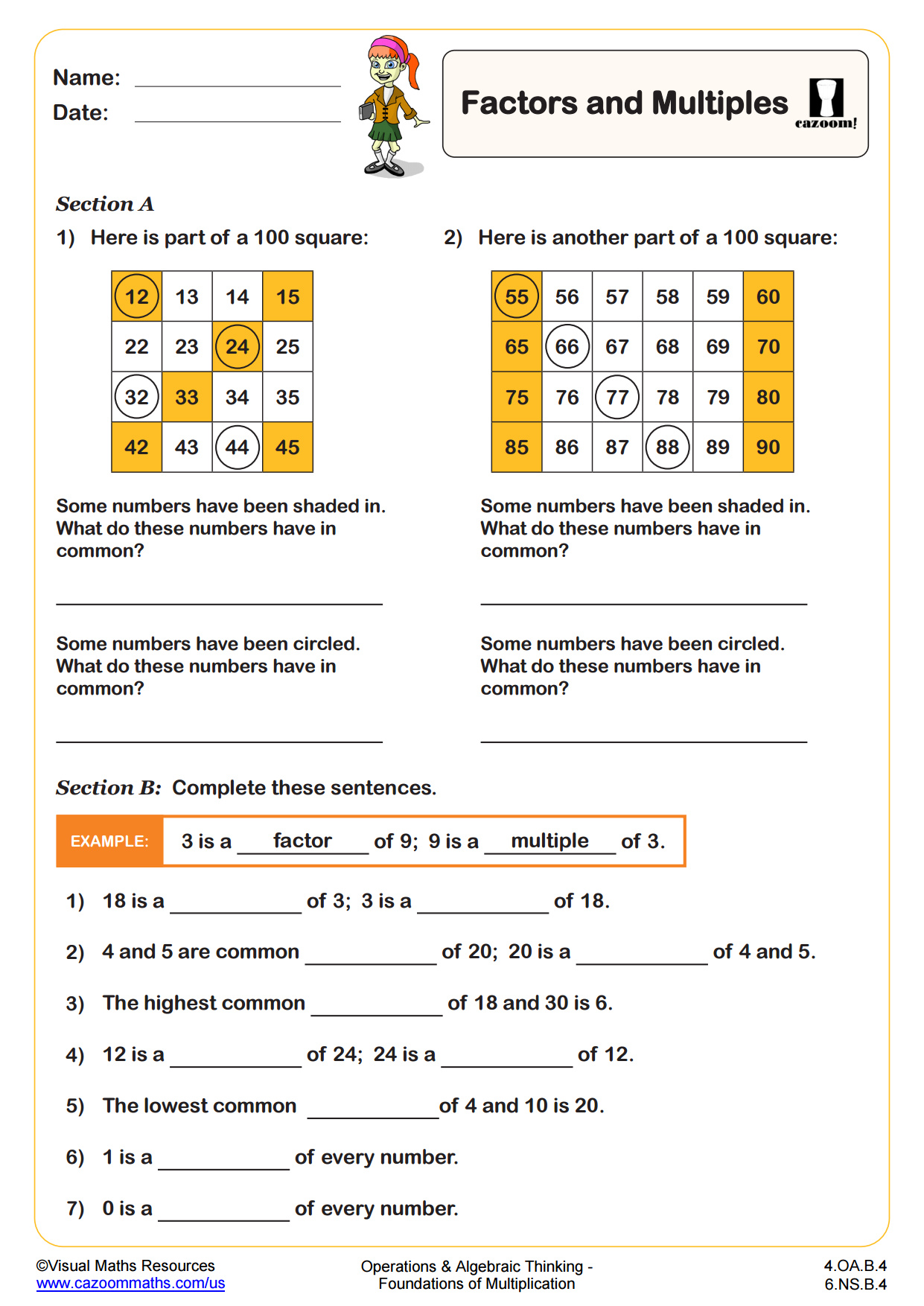
Factors and Prime Numbers
Grades: 4th Grade
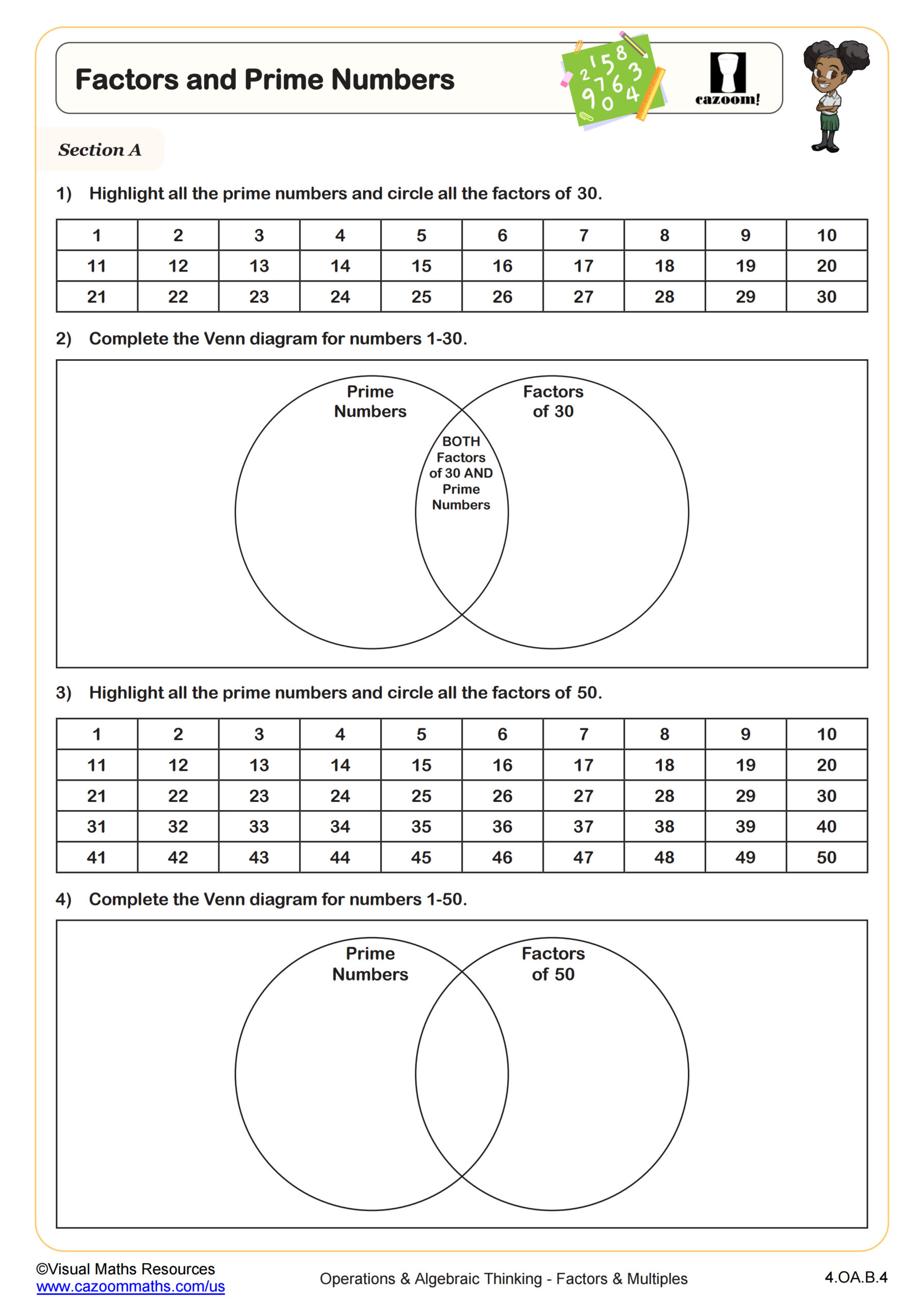
HCF (Highest Common Factor)
Grades: 4th Grade
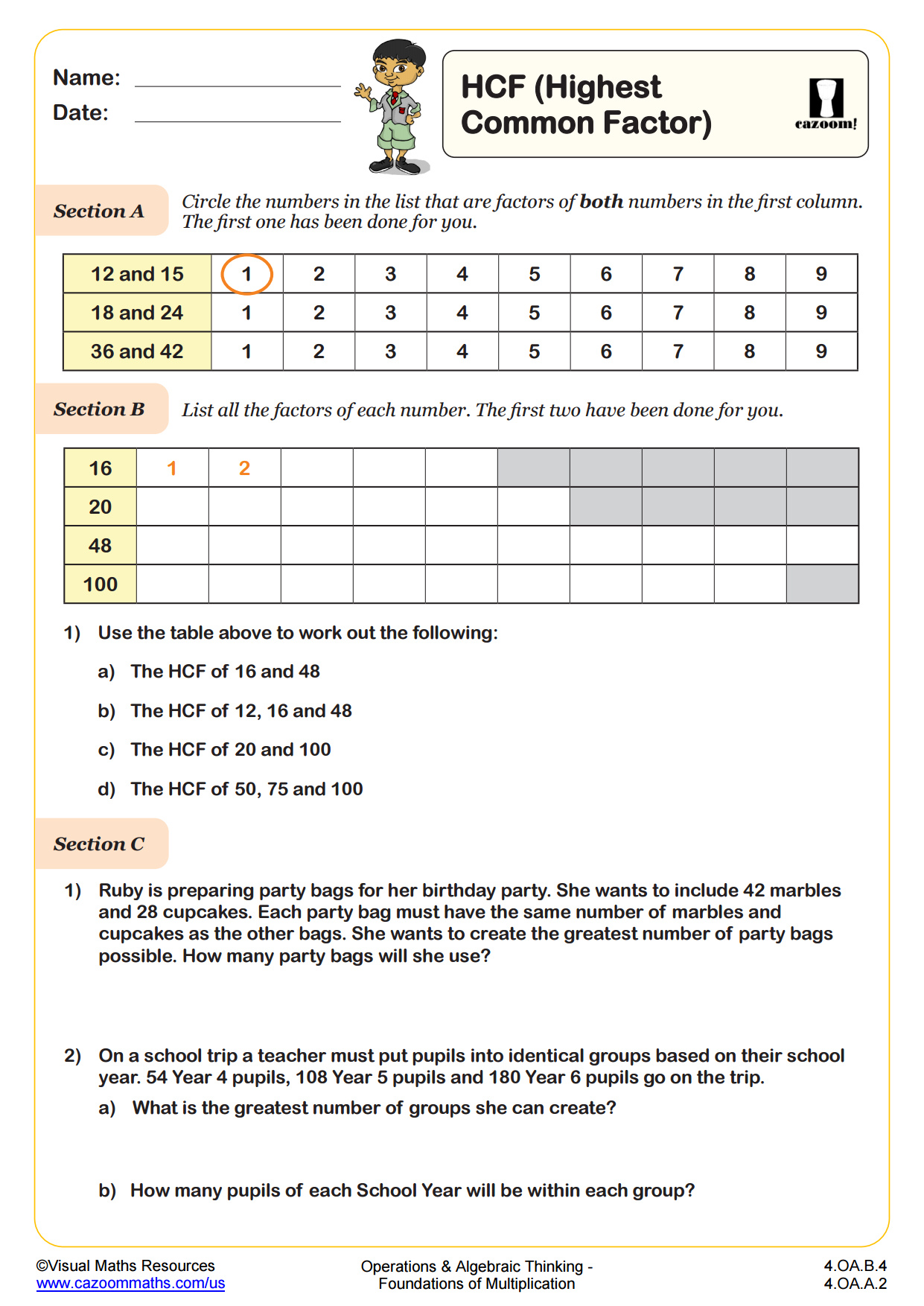
Identifying Prime Numbers
Grades: 4th Grade
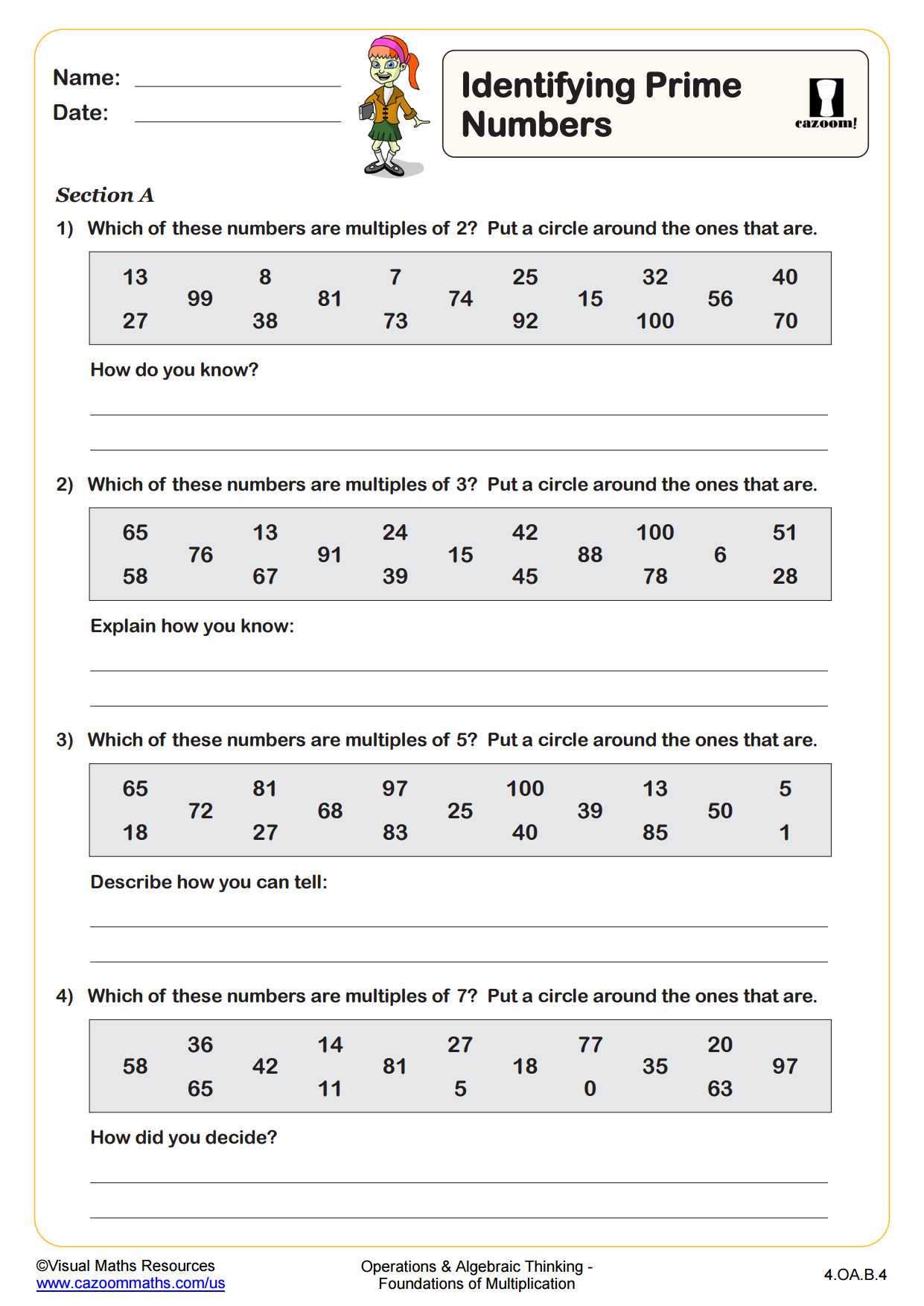
LCM (Lowest Common Multiple)
Grades: 4th Grade
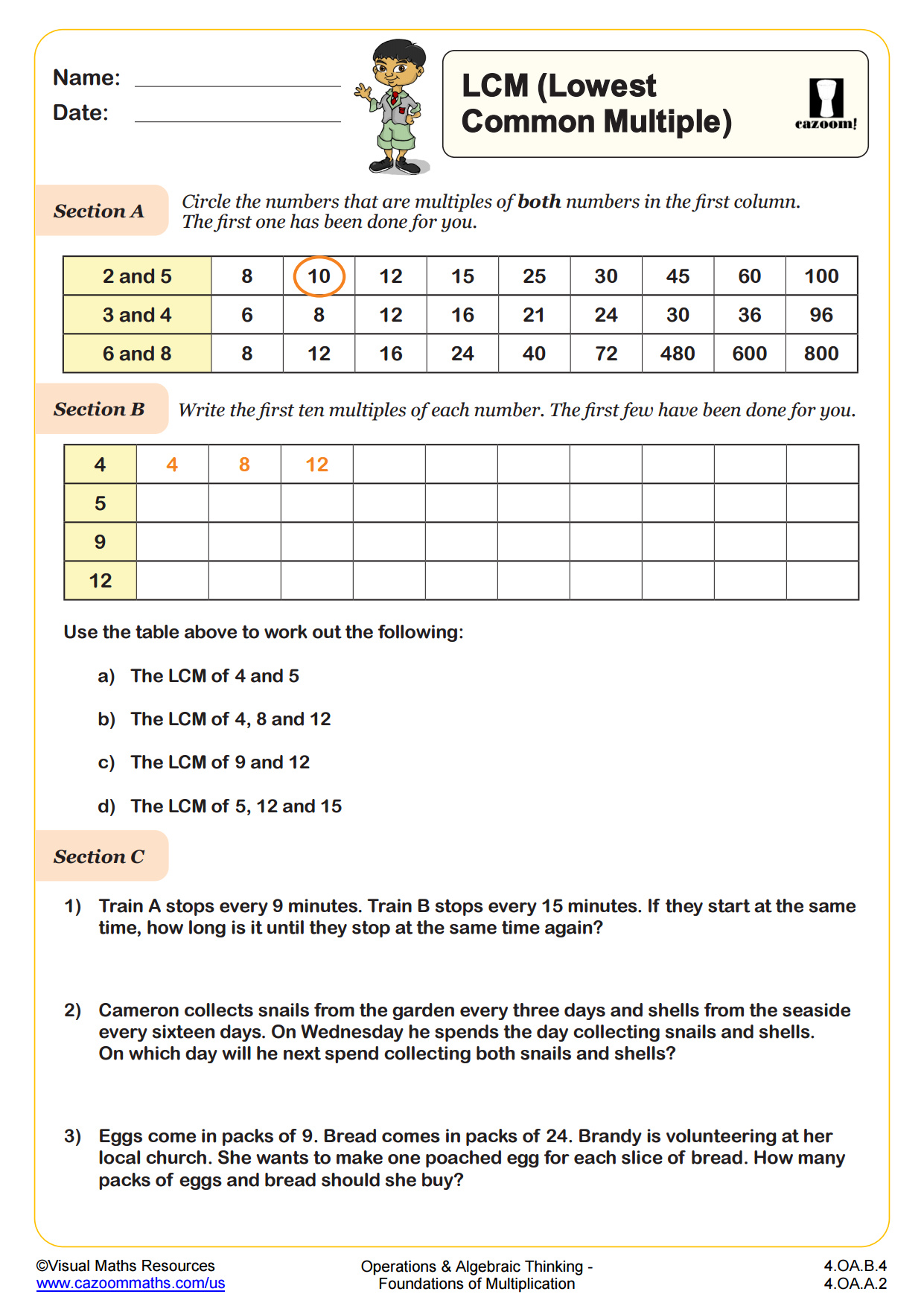
Prime Factor Decomposition - Using the Short Division Method
Grades: 4th Grade, 6th Grade
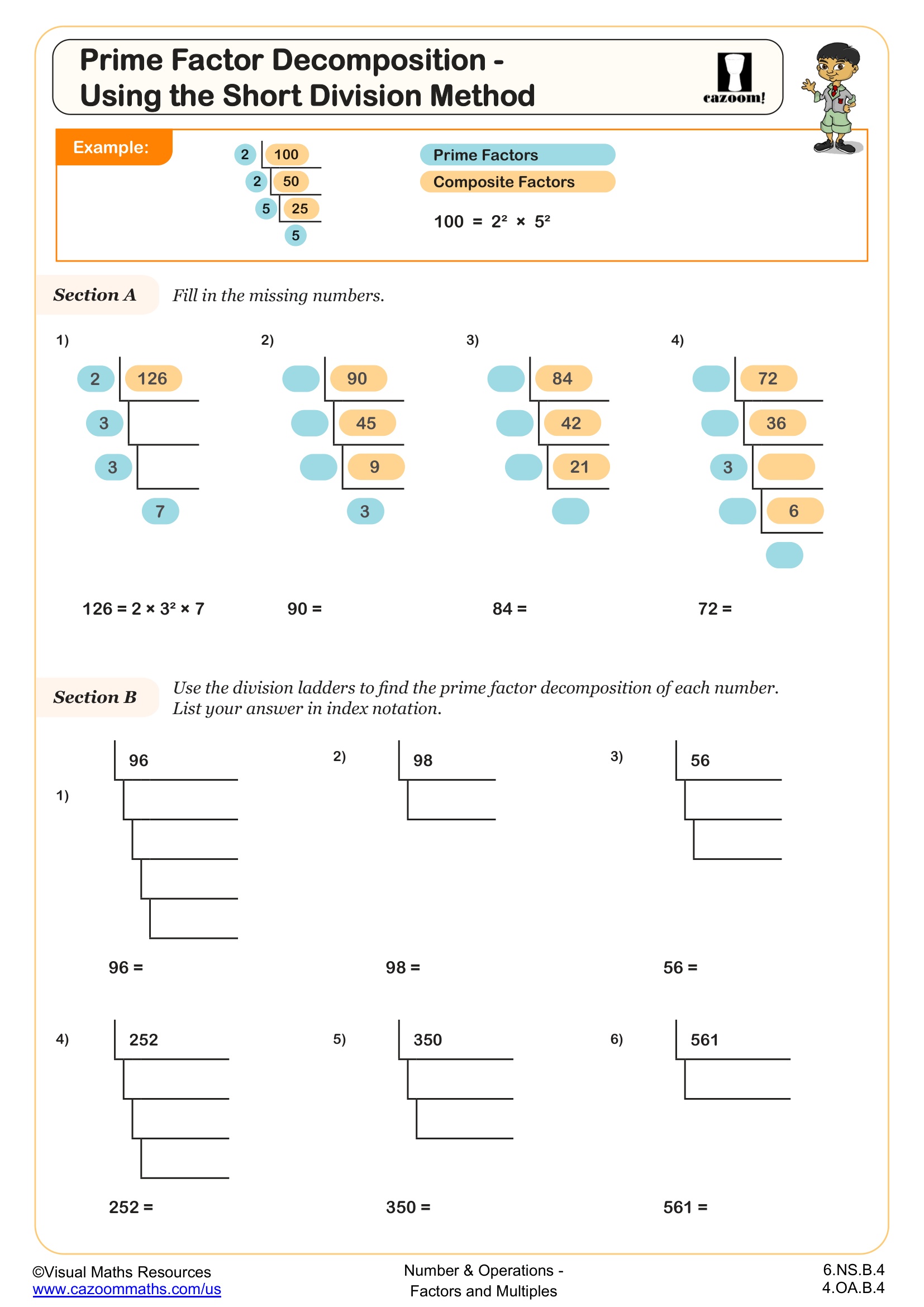
Prime Number Maze
Grades: 4th Grade
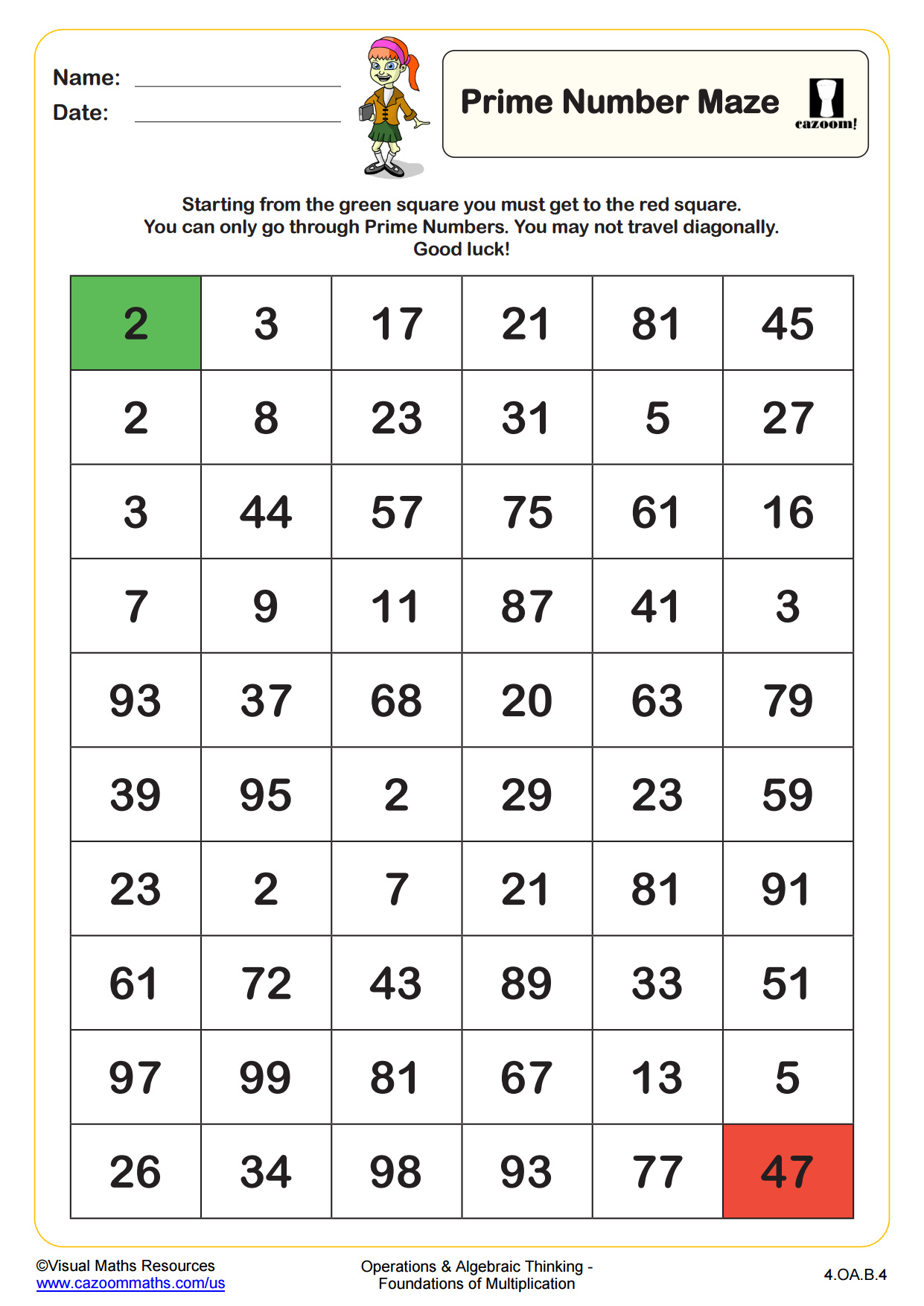
Finding the GCF and LCM using Venn Diagrams
Grades: 5th Grade, 6th Grade
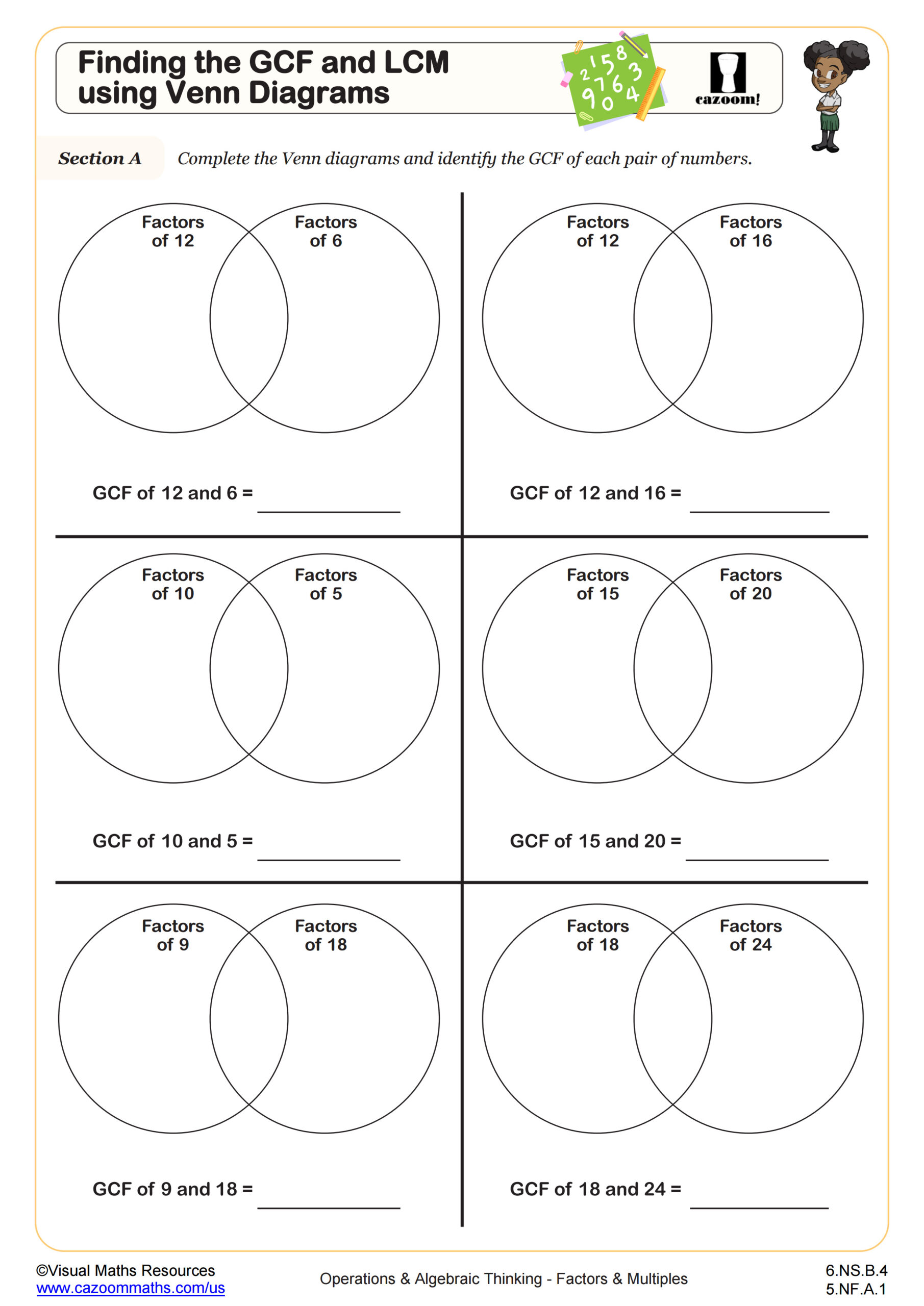
Greatest Common Factor (GCF)
Grades: 5th Grade, 6th Grade
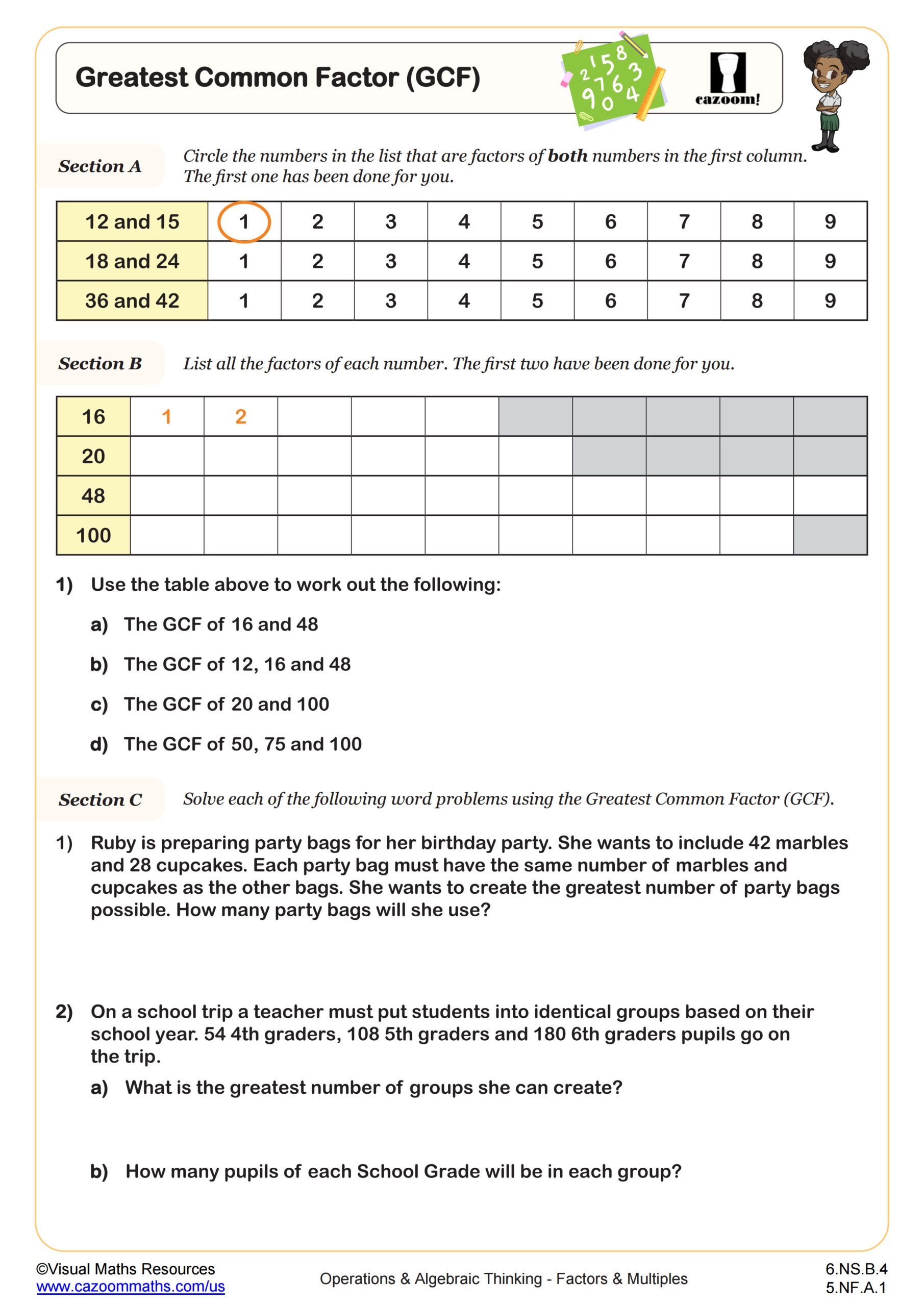
Least Common Multiple (LCM)
Grades: 5th Grade, 6th Grade
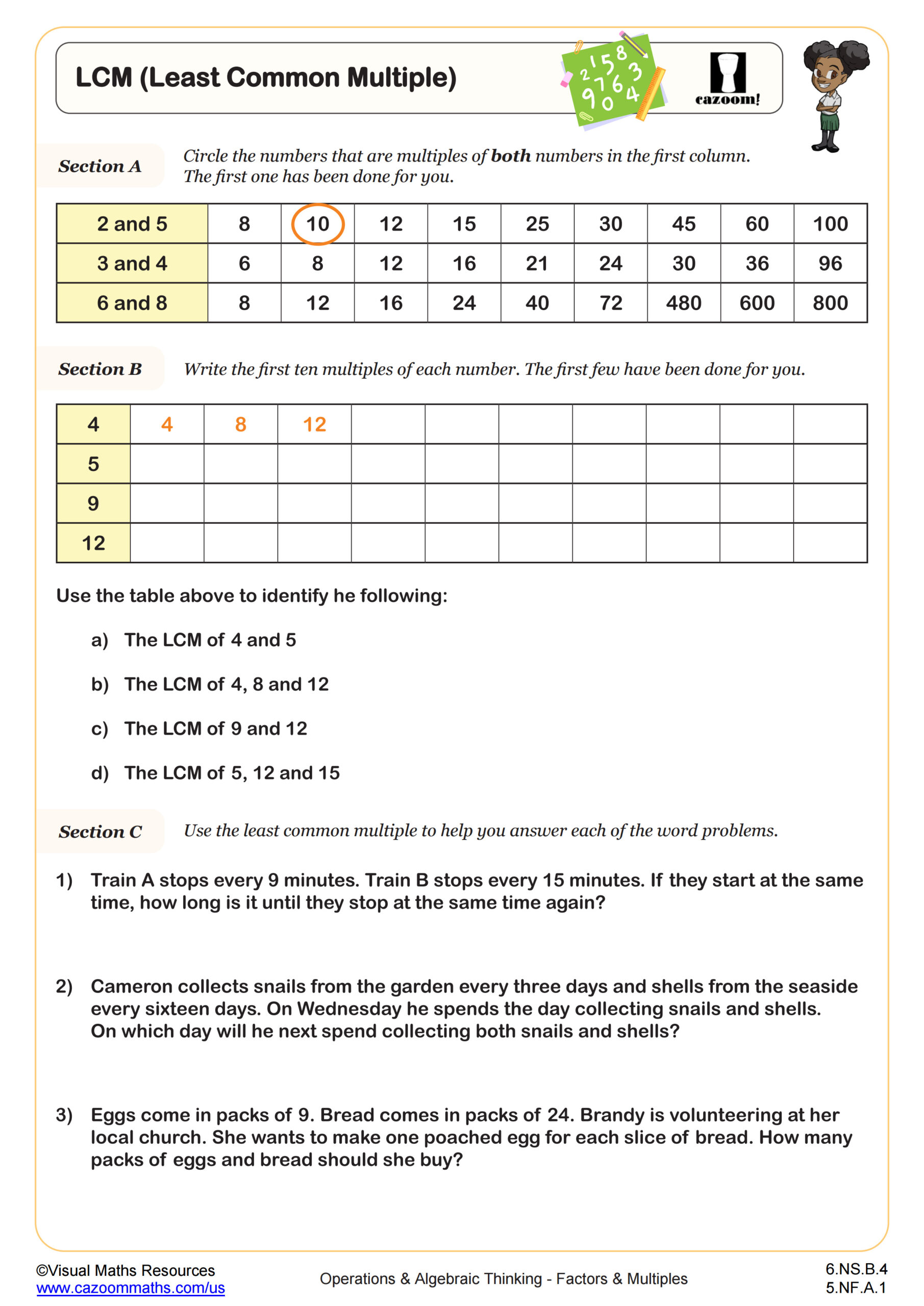
Prime Factorization for GCF and LCM (A)
Grades: 6th Grade
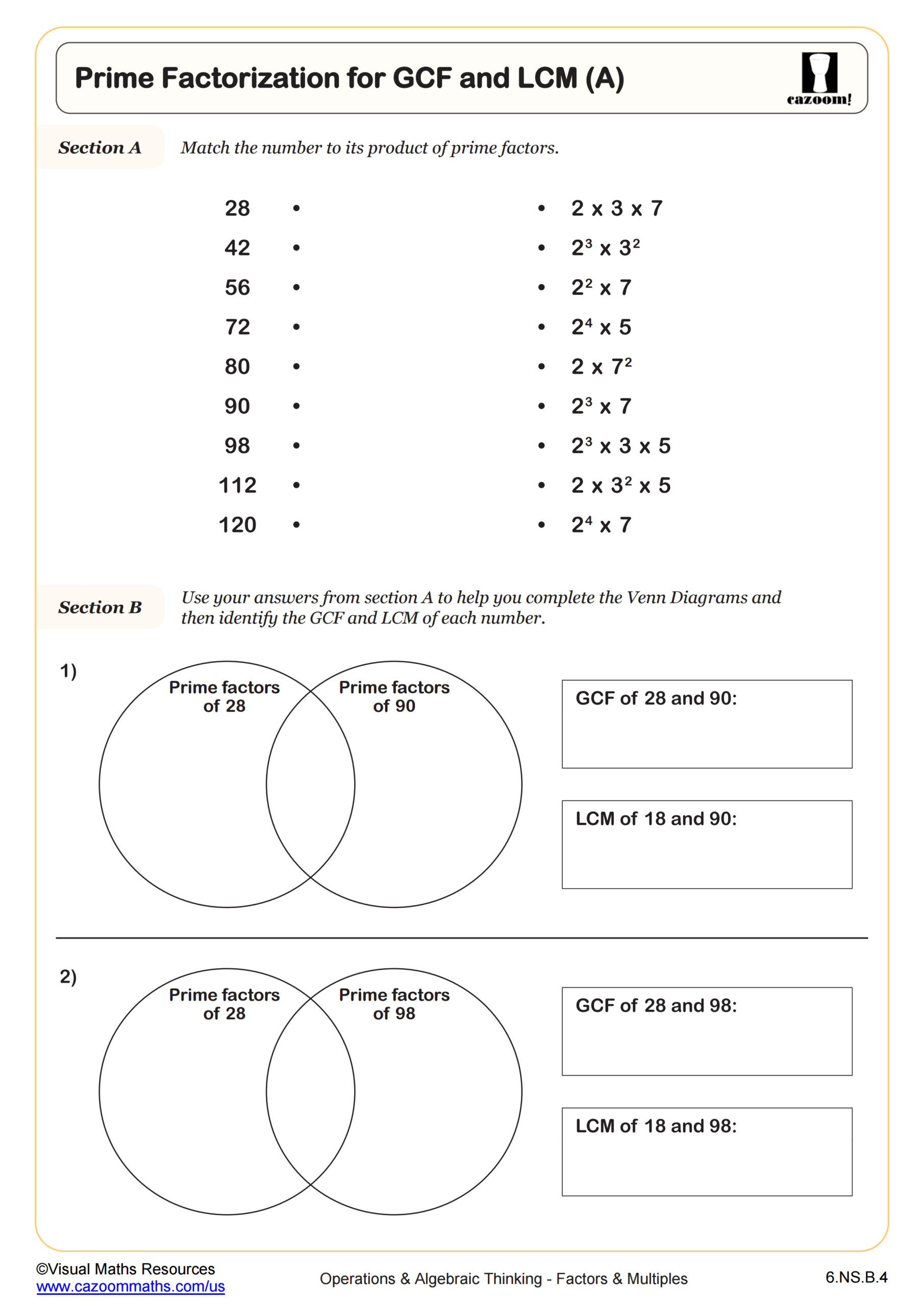
Prime Factorization for GCF and LCM (B)
Grades: 6th Grade
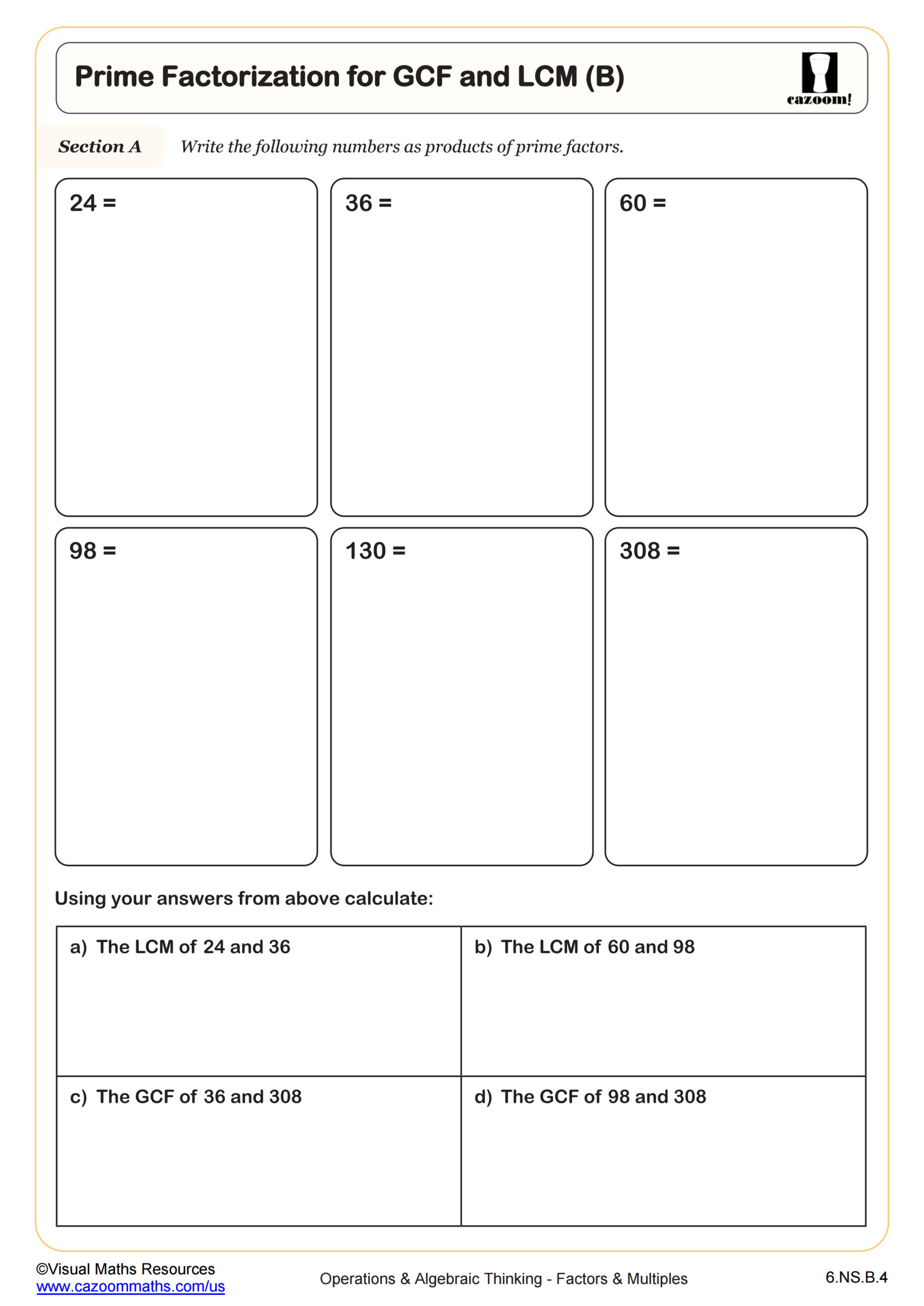
Prime Factorization with Factor Trees
Grades: 6th Grade
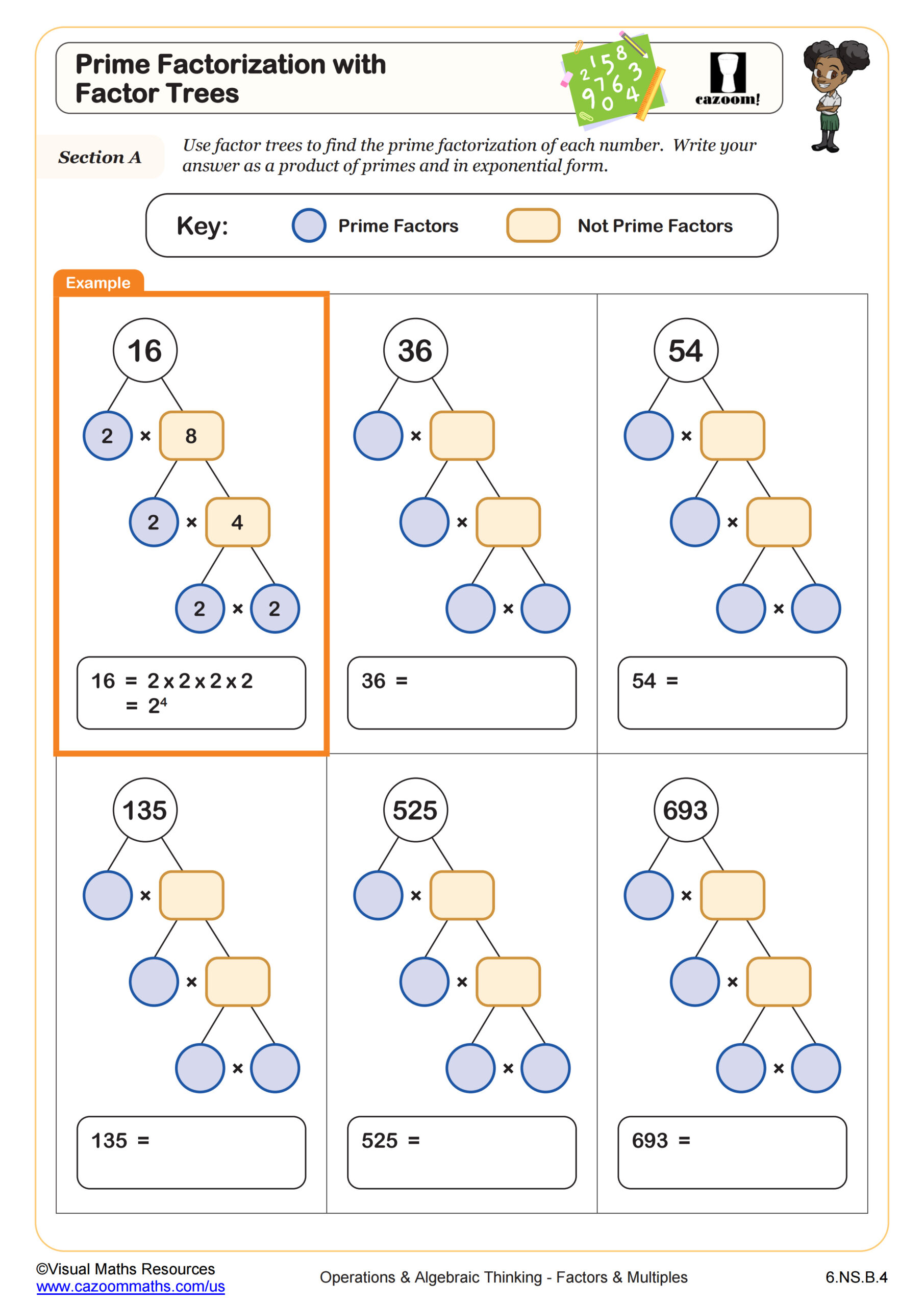
Sieve of Eratosthenes
Grades: 6th Grade
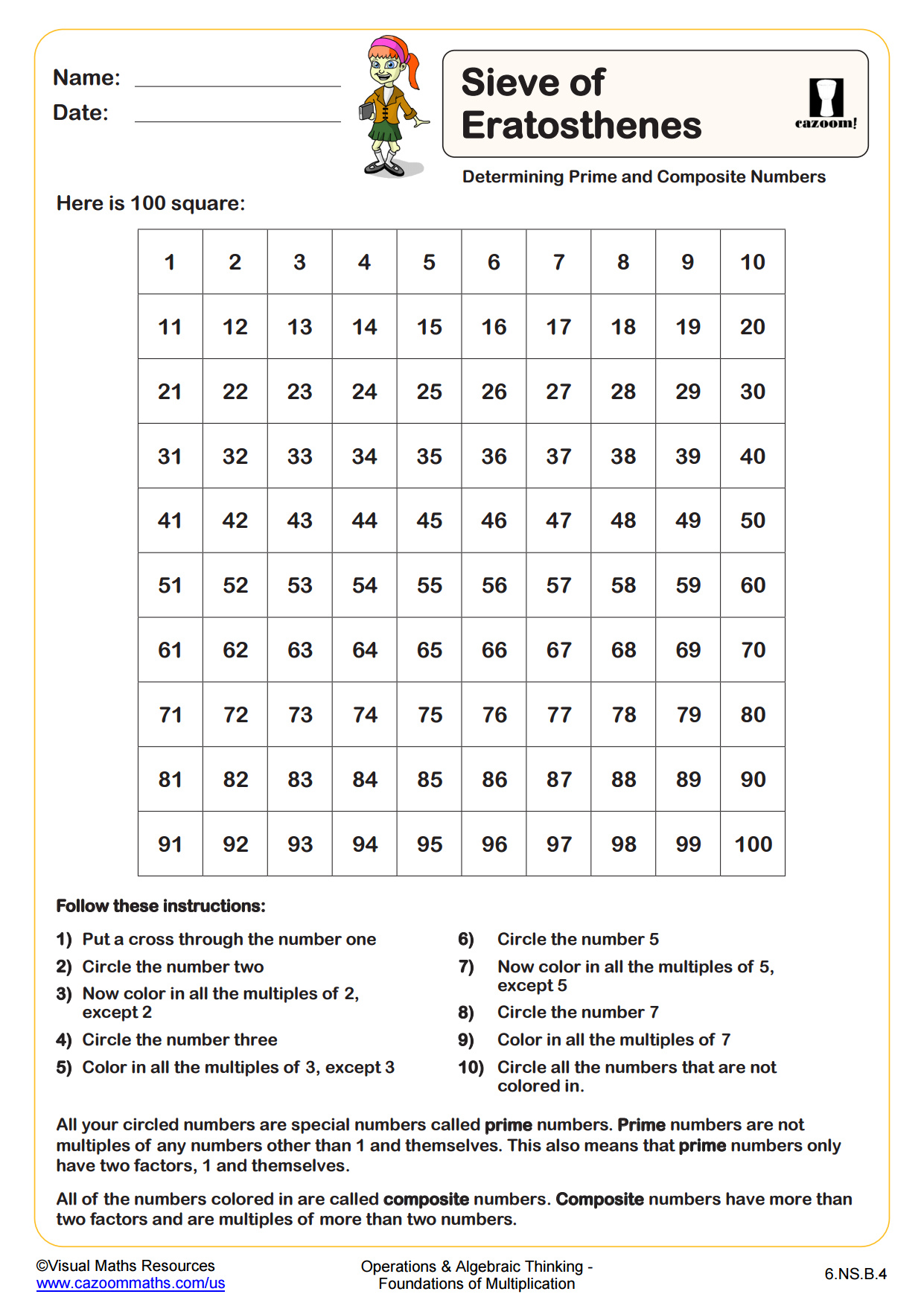
Using Prime Factor Decomposition
Grades: 6th Grade
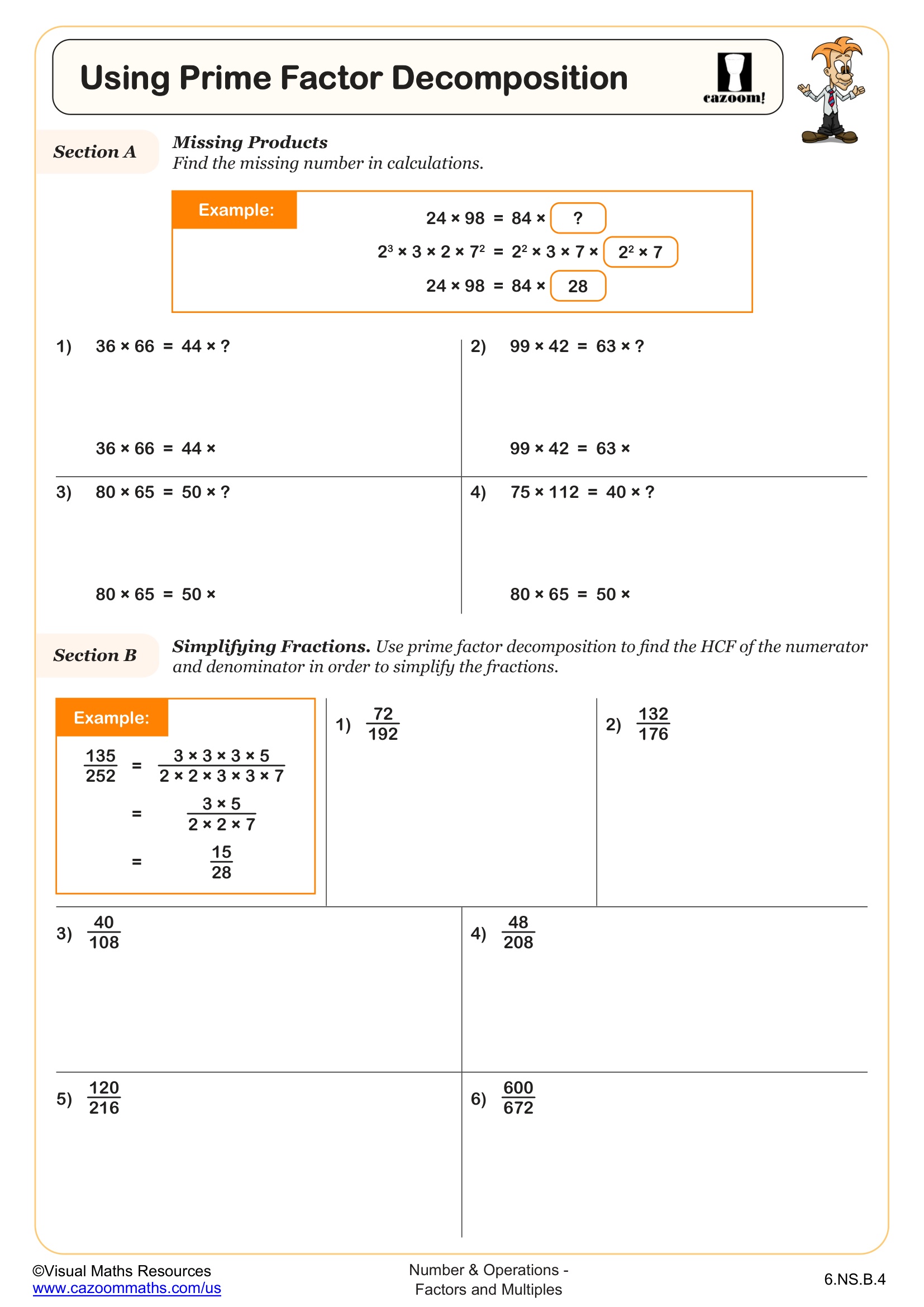
Using Prime Factors to Identify Square, Cube Numbers and Roots
Grades: 8th Grade

Printable PDF Factors and Multiples Worksheets with Answer Keys
Download our printable PDF Factors and Multiples worksheet resources to give students the push they need when learning different concepts of operations and algebraic equations. Our math experts have specifically curated these resources in a way that your children can master the different types of math operation worksheets using simple sums with clear and easy-to-understand instructions. Hence, all of our simple factors and multiples worksheets with answers pdf with answers are great for building a sense of math and early problem-solving skills.
What Are Factors and Multiples?
Factors are numbers that divide exactly into another number. For example, 1, 2, and 5 are all factors of 10. Multiples are the results of multiplying a number by whole numbers (e.g., multiples of 3 are 3, 6, 9, 12…). Students use these concepts to understand division, multiplication, and patterns. These skills are essential for working with fractions, ratios, and more advanced math topics later on.
Benefits of Factors and Multiples Worksheets
Learning how to work with factors and multiples improves students’ multiplication, division, and problem-solving skills. These worksheets help children identify patterns and develop logic for solving word problems, simplifying fractions, and comparing numbers. With engaging formats and answer keys provided, students can practice independently while gaining confidence in math.
Real-Life Uses of Factors and Multiples
Students use factors and multiples every day without realizing it. From sharing items equally, to grouping objects, or planning schedules, these concepts apply to real-world problems. For example, if you want to split 24 apples among friends or find out when two events happen at the same time, you need to use multiples or common factors. Our worksheets connect math to daily life and show why these skills matter.
What Should Students Know Before Starting?
Before working on factors and multiples, students should:
• Be confident with multiplication and division facts
• Understand how to identify even and odd numbers
• Know how to skip count and use arrays
• Recognize number patterns and place value
These basic skills create a strong foundation. Our worksheets build on that knowledge and help learners grow through structured and supportive activities.